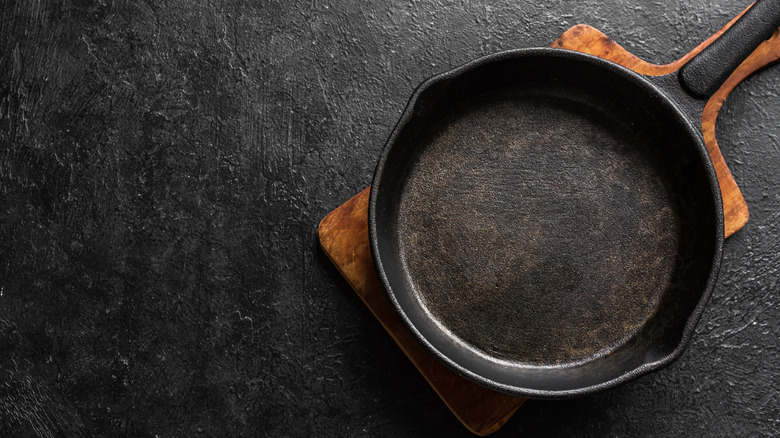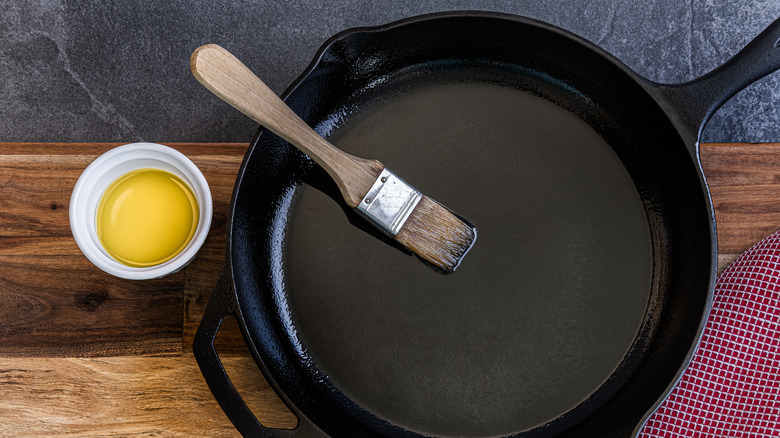How Martha Stewart Perfectly Seasons Cast Iron
Whether you're a home cook, a chef at a restaurant, or Martha Stewart, there are many benefits to using cast iron, mainly its versatility. The material holds heat well and is extremely durable, allowing you to fry, bake, and cook in it with ease. But how well a cast iron actually performs is also influenced by how well it's seasoned. Cook something on an unseasoned cast iron, and it'll most likely stick or the pan will get rusty over time. Luckily, this can easily be avoided with a proper seasoning technique, and Stewart publicly shared hers to TikTok.
As she demonstrated on her talk show years ago, Stewart swears by seasoning her cast iron pans with Crisco. She starts by washing and drying her pans, after which she rubs in a layer of vegetable shortening. Stewart then places them on top of a cookie sheet covered in aluminum foil, and after two hours of baking in a 350-degree Fahrenheit oven, they become perfectly seasoned.
Why Martha Stewart seasons her cast iron pans with Crisco
Cast iron pans can be seasoned with a variety of food-safe oils, and there are even special products that you can buy; however, Martha Stewart recommends Crisco for a simple reason: "The manufacturers of these pans recommend that you use a solid shortening," she stated. Of course, there's more to it than that.
Interestingly enough, the main benefit of using Crisco isn't so much its effectiveness, but rather its lower price point and the fact that it's available at most grocery stores. The best oils to season cast iron are actually ones with higher smoke points because they produce a stronger layer of polymerized oil, or seasoning. This makes oils like avocado and safflower oil ideal because their smoke points are in the 500-degree Fahrenheit range. Crisco's, by contrast, is a much lower 360 degrees Fahrenheit.
Alternatives to Crisco
If you don't often cook with Crisco, buying it for the sole purpose of seasoning your cast iron pans — something that you only need to do once or twice a year — basically defeats the point of using a cheaper product. If you know you'll get better use out of oil over shortening but still want something effective and affordable, opt for canola oil instead.
Though Stewart herself uses Crisco to season her cast iron pans, her website recommends canola oil as well. Its 425-degree Fahrenheit smoke point is higher than Crisco's 360-degree Fahrenheit, so it technically produces a stronger layer of polymerization. The one downside to canola oil is that it can often produce a sticky residue on your pan. This is due to the pooling of excess oil, which is a lot easier to avoid with Crisco, which is solid when you apply it. If you do use canola oil, make sure to only use a thin layer — and to bake your pans upside down per Stewart's suggestion.


